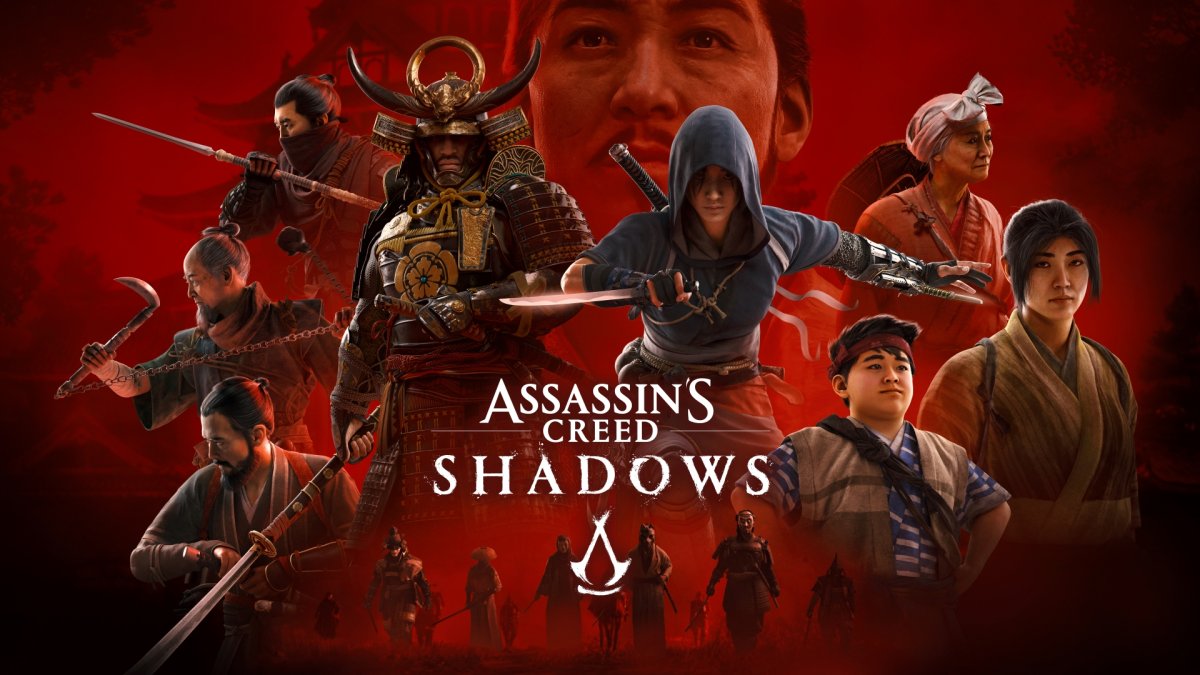Entertainment gossip and news from Newsweek's network of contributors
Ubisoft is at a crossroads with Assassin's Creed. While the franchise's recent RPG era has been financially successful, it has left a sour taste in the mouths of veteran fans. Assassin's Creed: Shadows aims to fix that by combining the best of both worlds to keep both new and old fans happy, and it might just achieve that goal.
I played four hours of Shadows at a recent preview event, which included exploring a region of feudal Japan and tackling a series of quests in the main story. After going through the prologue introducing its dual protagonists, I was free to explore as much of the build as possible. At the end of it, I was thoroughly impressed.
Shadows lets you freely switch between its two protagonists: the shinobi Naoe and the samurai Yasuke. While exploring the open world, you can switch between them at any point, and commit to one of them at specific points during quests. Besides the prologue, at no point in my preview was I forced to play as either, though how much of that freedom extends to the full game remains to be seen.

As a fan of the original games, I chose to play as Naoe as much as possible, and she feels great to control. Ubisoft Quebec brings back the parkour up and down buttons and, combined with the grappling hook, the movement system feels like a streamlined version of that in Assassin's Creed: Syndicate. You've got more control over Naoe's momentum and vaults over small obstacles, adding personality missing from some previous games.
Naoe's also the best at stealth, sneakily cutting out dynamic light sources and staying in the shadows. Adding a prone button makes all the difference, making Naoe the ultimate ninja and a good example of the Assassin archetype. Double assassinations? She can do that. Grabbing an enemy and dragging them into the dark for a stealth kill? She's your girl. Just keep track of her noise meter and plan your attack route before tackling a large zone.
Yasuke, on the other hand, is a brute. While he can climb walls, you won't use him to scale over castles, because doing so without the grappling hook is nearly impossible. The stronger nature of Yasuke's moveset also extends to other moves. He doesn't sneakily slice someone's throat and move on, he makes a show of it.
Choosing Yasuke on the battlefield has advantages, making one-on-one boss fights easier. He can also smash through doors and certain enemies, becoming the perfect candidate for castle sieges. Naoe isn't far behind, and she can take on multiple enemies just fine with the right weapon and upgraded skills.
This is the first Assassin's Creed game built for the current generation of consoles from the ground up, and the new hardware's capabilities are on full display. Ray-traced global illumination makes nights and indoor areas more atmospheric, while the weather and season system change the world's layout, directly affecting gameplay.
The seasons also tie into your wanted level. If your notoriety level increases to a critical amount, traveling through the world becomes miserable. The only way to decrease the level is by switching to a new season, or by switching to the other character. You can't switch the season willy-nilly either, as doing so requires buildup on a specific season gauge via general activities. And no, you can't just surrender yourself to die hoping for a reset of the wanted level.
Shadows' world feels more alive than its predecessors due to small interactions. Like Red Dead Redemption, you can use contextual responses towards NPCs. While Yasuke can enter certain walled fortifications, he'll be politely asked to leave if he's in a restricted zone. Refuse the request, and a fight breaks out. Naoe, on the other hand, is less welcome in these areas.
There are more ways to control the characters than in recent games, but not all are well-executed. Switching throwables isn't fast, so you never feel like a true ninja who can throw shuriken and smoke bombs to vanish from the site faster than enemies can blink. It took us over 14 games, but we finally have a toggle to auto-follow NPCs and auto-loot resources.
Unfortunately, the preview build didn't let me switch characters mid-battle. Once you've selected a character for a specific section in a quest, you're locked in. This makes certain parts difficult, like getting stun-locked by a group of enemies as Naoe after a pivotal quest twist. You can't go back to the moment you chose a character after dying, and sometimes it's hard to tell what type of mission is ahead.
Longtime fans are tired of the new era's focus on building branching narratives. You can still role-play by choosing through dialog options that branch out, but there's a new "canon mode" setting for purists. Those who are into making choices can now explore a new conversation log to keep track of NPCs' dilemmas. This is especially helpful when faced with difficult decisions.
Those who want to immerse themselves further can enable "immersive mode" that retains Portuguese and Japanese voiceovers in line with the time period. Enabling that in the game's prologue brings it closer to FX's Shogun than any other game, and that's cool.
One of the most interesting additions to the game is its Initiate system. Like Assassin's Creed Brotherhood, you can train and deploy other Assassins – or brutes like Yasuke – to do your dirty work. The preview build only had two slots available for initiates, and you need to build up a certain amount of resolve to call upon them. Hideouts will let you upgrade and add more recruits.
Exploration is also not as reliant on markers and repetitive systems. Taking the iconic towers as an example, you can't fast travel between all of them. Instead, there are specific hideouts you can buy with in-game resources, and only select towers can be used for fast travel. Not all towers have a haystack below them to jump onto, so you'll be forced to parkour down the side. You also don't get a friendly eagle/raven by your side to scout an area from the skies, which makes taking on a fortified area challenging.
Unfortunately, I didn't see any system that could tie into social stealth. There are no monks to blend in with here. I hope the final game does include some social stealth, bringing back a core pillar of the franchise that makes you feel like a silent blade in the crowd.
I played the game on a PC with unspecified settings and couldn't check out the graphics menu to pass judgment on its scalability. Playing at 1440p, I could tell that the build was using some form of upscaling, and it maintained its target performance of 60ps most of the time. I didn't encounter any obvious bugs, so the multiple delays have helped the game.
All of this is built on the "Dark Animus" hub, the new live service platform that Shadows is launching with. Think of it as the Call of Duty launcher, where you'll see panels for all Assassin's Creed games post Syndicate, along with tabs for a battle pass, in-game challenges, and an item shop. It's unfortunate, but it's real, and we can't do anything to stop Ubisoft.
I had low expectations for Shadows before playing a significant chunk, and I'm impressed. It seems Ubisoft Quebec has taken the feedback from veteran fans and carved a gameplay loop that honors the past. It's not quite the perfect mix of the old and new, but it's getting close. However, some extrinsic factors still remind me that the franchise I fell in love with is gone forever. Get that battle pass out of my Assassin's Creed, thanks.
Hopefully, Shadows is good enough to earn a top spot in our Assassin's Creed ranking.
Assassin's Creed: Shadows releases on March 20, 2025, on PC, PS5, and Xbox Series X|S.




















 English (US) ·
English (US) ·